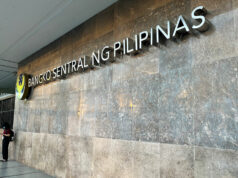Industry banks on energy efficiency law to unlock investments
MEMBERS of the Philippine Energy Efficiency Alliance, Inc. (PE2) need to plan their staffing and capital resources based on how the proposed energy efficiency law would be able to “catalyze” investments in both the private and public sectors, the group’s top official said.

“Some of these players will have to broaden access to newer technologies, staff capacity development resources, and even to project or operating capital from either debt or equity sources,” said PE2 President Alexander Ablaza in a response to questions via e-mail.
He made the comments after the Bicameral Conference Committee convened on Wednesday to reconcile the disagreeing positions of Senate Bill 1531 and House Bill 8629. They approved the Energy Efficiency and Conservation (EE&C) Act on the same day. The reconciled bill will become law once signed by the President.
Mr. Ablaza said it might be too early to estimate revenue-based market sizes for companies involved in energy efficiency, but said he hopes the law would be able to mobilize a sizeable portion of the $243-billion capital requirement for the local economy to realize the Department of Energy’s targets under the 2040 energy efficiency and conservation road map.
He compared the sector to how the Renewable Energy Act 10 years ago started to solidify a “loose and fragmented” renewable energy (RE) sector.
“Today, the RE sector, albeit still riding on a growth curve, has matured with the entry of more market players and dedicated capital,” Mr. Ablaza said.
“An energy efficiency sector would become more prominent as it works alongside the RE sector in increasing the clean energy footprint of the Philippine energy market,” he said.
He said the market players in the sector would include accredited energy service companies (ESCO), energy efficiency technology suppliers, service providers, energy auditors, energy management consultants, professional services, financial institutions, financial advisors, financial services, equity providers, investors, nonprofit programs, local government units and end-users.
“A few other PE2 members will contribute to skill development, certification of professionals, ISO 50001 compliance, or to increasing muti-sectoral awareness of the new law and its forthcoming implementing rules and regulations,” he said.
“PE2 will have to step up its partnerships with relevant government agencies as they formulate standards, guidelines and regulations in support of the law, its obligations and incentives,” he added.
Mr. Ablaza said what remains crucial is that after a long 28-year wait, the Philippines is joining its neighbors in the Association of Southeast Asian Nations “as the newest and only remaining country that has enabled a mandatory energy efficiency regime through legislation.”
“The targeted minimum removal of 182 million tons of oil equivalent (Mtoe) in the form of avoided energy purchases will result in incremental [gross domestic product] growth, green job generation, deferment of 45,900 [megawatts] of energy infrastructure capacity upgrades, and in the deceleration of the annual rise in energy prices,” he said. — Victor V. Saulon



